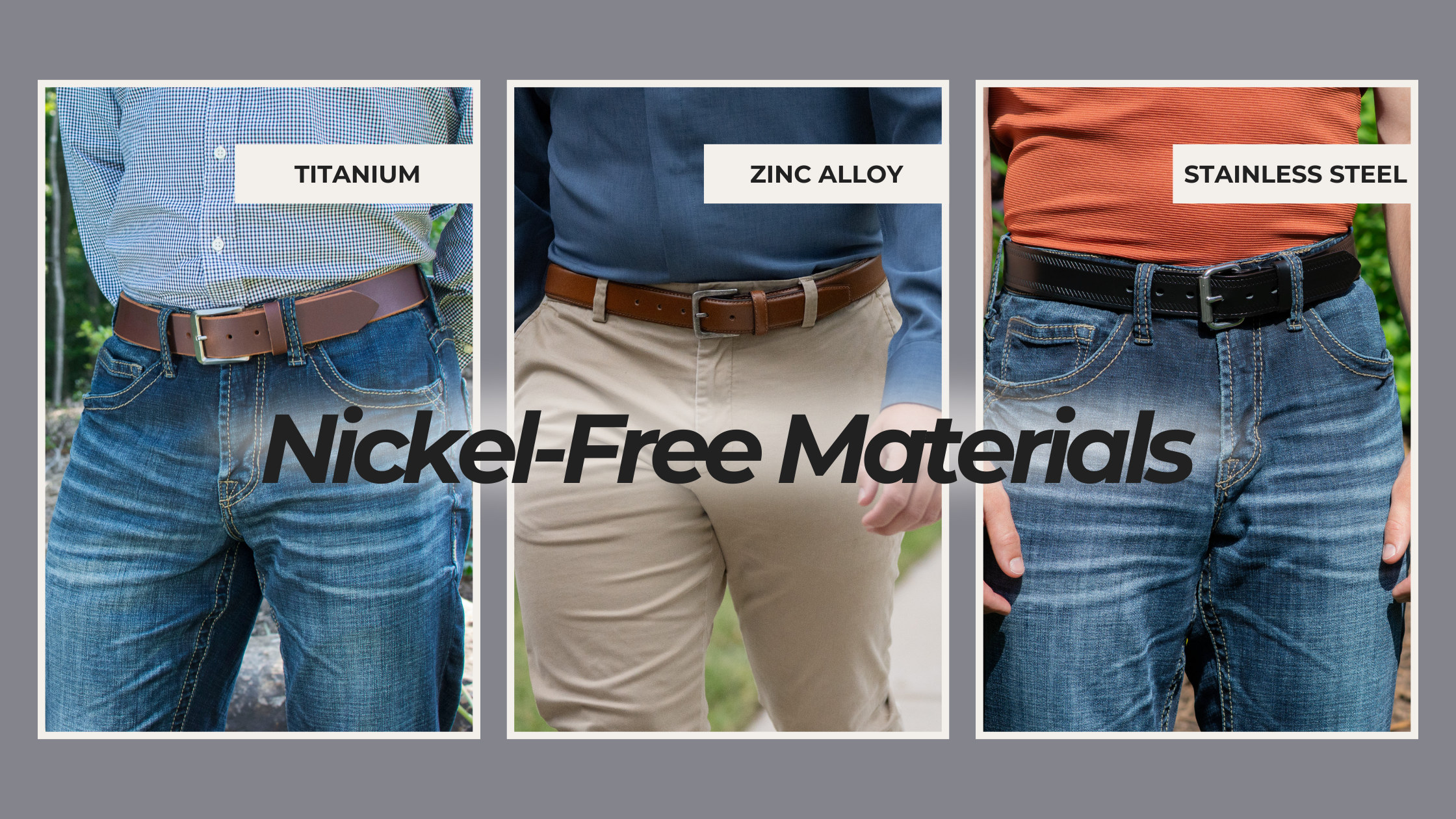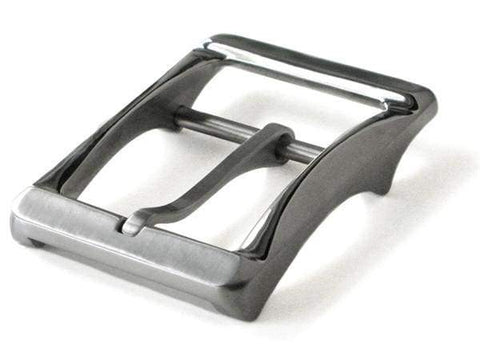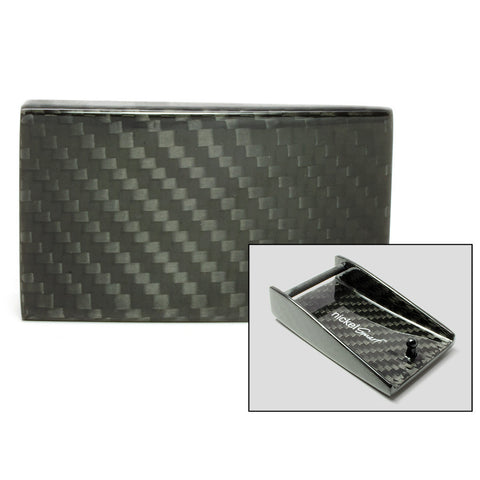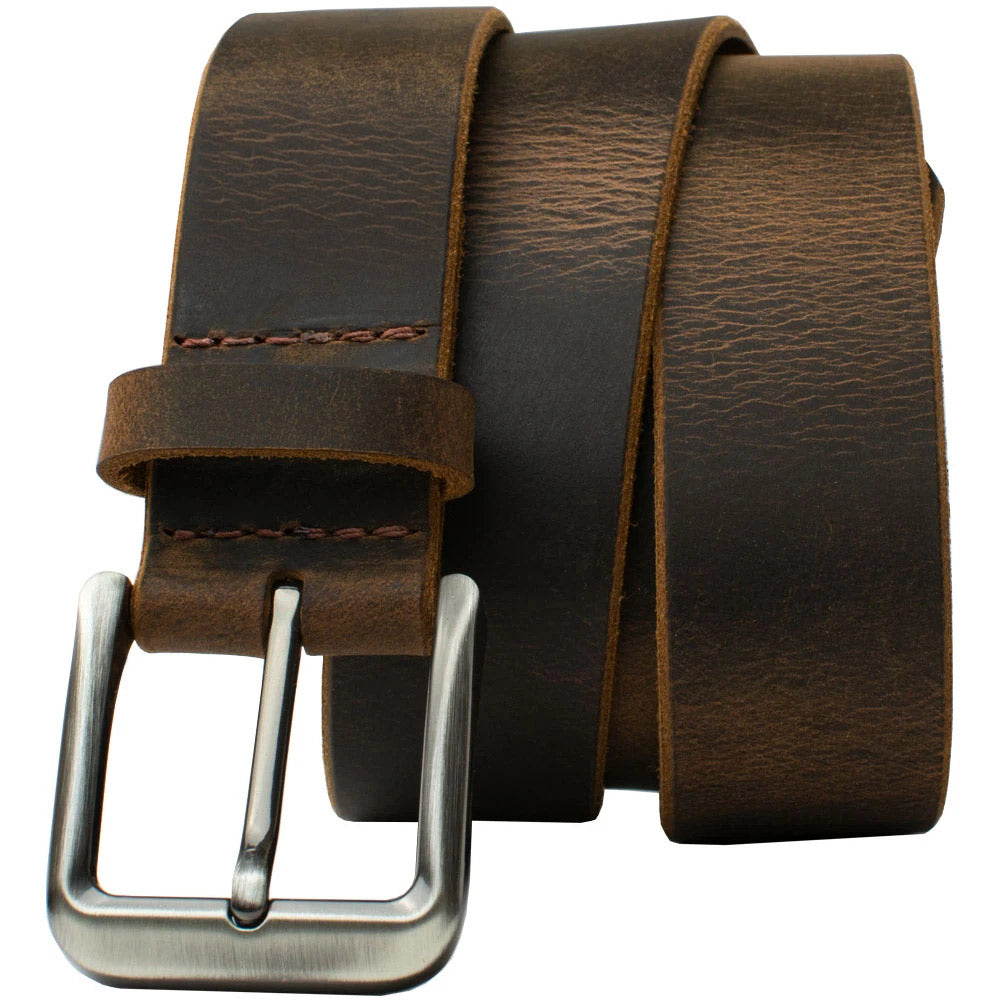Making It Nickel-Free: Materials Used In Our Nickel-Free Belts, Buckles, & Jewelry

Titanium (Ti)
Titanium has a very high strength to weight ratio in addition to being corrosion resistant. These attributes make it an ideal material for belt buckles and jewelry and for use within the human body.
Our titanium buckles are 100% solid titanium.
Topical allergic reactions to titanium are very rare.
Characteristics: Titanium can be polished, brushed or bead blasted for a variety of finishes. Titanium is 60% harder than steel and 40% lighter. It is difficult to work which adds to its expense, but is an ideal material for those with multiple metal allergies.
| Cost: | $$$$$ |
| Durability: | ❿ |
| Allergenicity: | Extremely Low |
| Example: |  |
| Products Available |
Carbon Fiber (CF)
Also called graphite fiber or carbon graphite, carbon fiber is lighter and stiffer than steel and low allergenicity make it an ideal choice for those with nickel allergy.
Carbon fiber is made from organic polymers and drawn into long strands or fibers, which consist of long strings of molecules held together by carbon atoms. The fibers are woven into fabric or combined with other materials then molded into our belt buckles.
They are ideal for dress or casual usage, not heavy duty or work applications.
| Cost: | $$$$$ |
| Durability: | ❻ |
| Allergenicity: | Very low |
| Example: |  |
| Products Available |
Zinc Alloy (Zn)
Zinc is a very common element that can take many forms from metals to supplements. It is inexpensive, is often used as a base metal, and accepts various platings well.
Our zinc buckles are made from an alloy of nickel free zinc, copper, aluminum, and magnesium, with a nickel free plating.
Characteristics: Zinc is softer than steel and is easily poured into molds or cast into various shapes. Its good corrosion resistance and low allergenicity make it an ideal choice for those with nickel allergy.
| Cost: | $$ |
| Durability: | ❻ |
| Allergenicity: | Very Low |
| Example: |  |
| Products Available |
Stainless Steel
Stainless steel alloys have many formulations and often include chromium, nickel, and molybdenum – chromium gives the metal its scratch resistance, nickel provides a smooth and polished finish, molybdenum gives greater hardness.
Surgical Steel typically contains nickel, but certain formulations and processes utilized in its manufacture create a very tight bond where the nickel salts do not leach out and cause a nickel allergic reaction. Stainless steel should be tested prior to use by those with nickel allergy.
Characteristics: Stainless Steel does not corrode, rust, or stain. Its strength is similar to steel and features a highly lustrous and durable finish.
| Cost: | $$ |
| Durability: | ❽ |
| Allergenicity: | Low |
| Example: |  |
| Products Available |
Silver (Ag)
Sterling Silver is too soft to use for producing functional objects, therefore are usually alloyed with copper or other metals to enhance durability. Other metals may include germanium, zinc, and platinum as well as other additives such as silicon and boron.
Characteristics: Sterling Silver is typically used for jewelry, not belt buckles. Testing is recommended since many jewelers create their own mixtures.
| Cost: | $$$$ |
| Durability: | ❶ |
| Allergenicity: | Low |
| Example: |  |
| Products Available | Nickel Free Jewelry |
Brass & Bronze Alloys
Brass is an alloy of copper and zinc. Bronze is an alloy of copper and tin. Both alloys are often mixed with other metals and can contain small amounts of nickel. While their classic alloys are typically safe, most small cast parts are manufactured overseas and should be tested for nickel content prior to use by those sensitive to nickel.
Characteristics: Brass typically has a bright gold appearance, but can be antiqued or plated. Bronze has a coppery appearance and also can be antiqued. Both alloys are softer than steel.
| Cost: | $$$ |
| Durability: | ❻ |
| Allergenicity: | Low (in its classic alloy formulation) |
| Example: | We do not sell |









